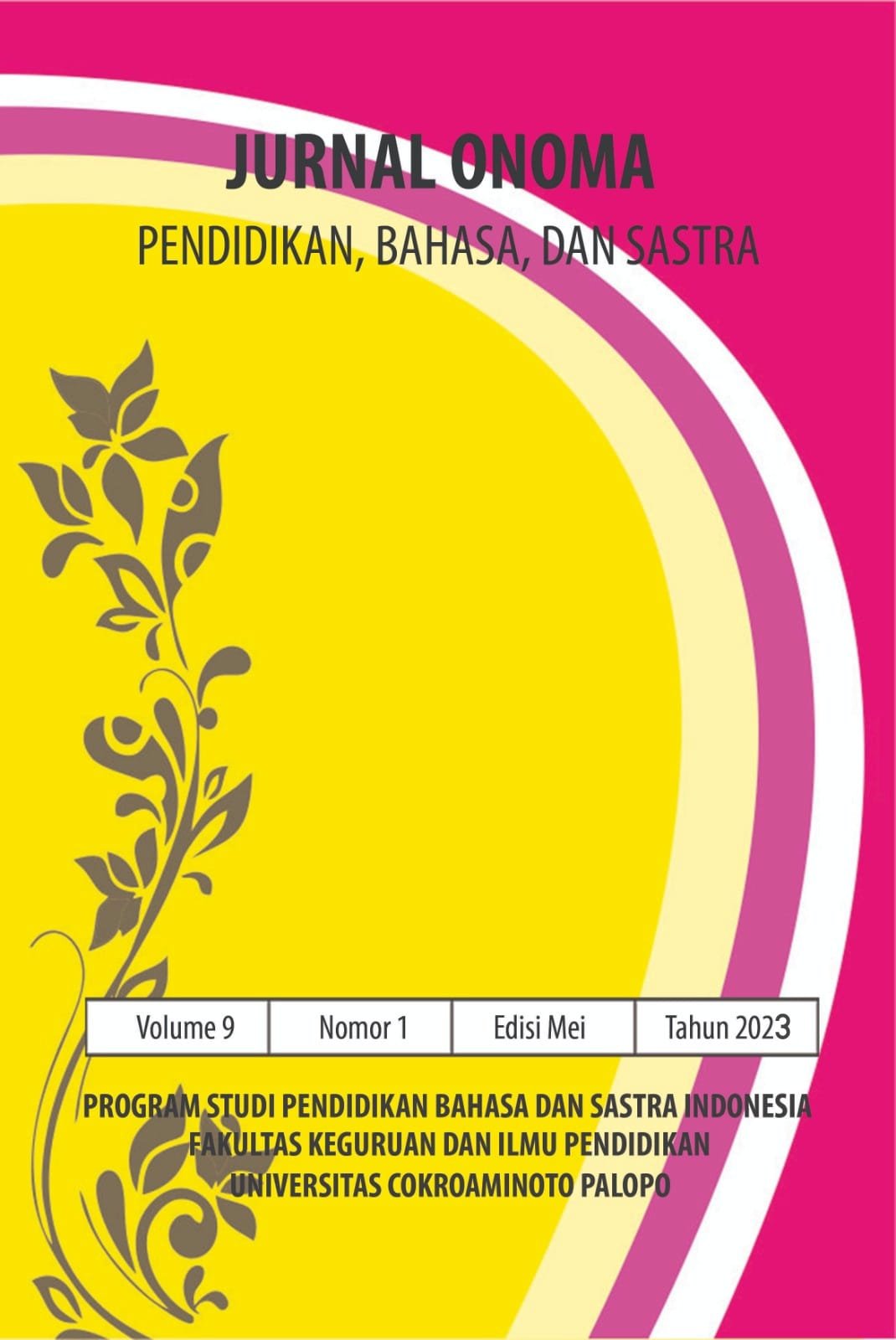Implementasi Pembelajaran Lintas Budaya dalam Perspektif Pengajar BIPA: Tantangan dan Peluang
https://doi.org/10.30605/onoma.v9i1.2338
Keywords:
Bahasa Indonesia bagi Penutur Asing (BIPA), BIPA Teaching, Intercultural LearningAbstract
BIPA learning can adapt the concept of intercultural learning with the aim of mastering language and understanding Indonesian culture. Intercultural learning bridge the process of introducing Indonesian culture in the BIPA class. The success of a learning process does not escape the challenges and opportunities faced by teachers. This study aims to describe the challenges and opportunities of intercultural learning from the perspective of BIPA teachers. The research method used is descriptive-qualitative. Researchers interviewed the research subjects, who were six BIPA teachers. The results showed that there were several challenges and opportunities in BIPA intercultural learning. Some challenges in intercultural learning are differences in perspective and cultural background, self-adaptation, heterogeneous class situations, cultural similarities seek, and learner needs. Some of the opportunities for these challenges, namely intercultural communication, intercultural discussion, and Indonesian culture diplomacy. Furthermore, this research can be a reference for BIPA teachers in implementing intercultural learning.
Downloads
References
Clark, H. H., & Brennan, S. E. (1991). Grounding in Communication. In L. B. Resnick, J. M. Levine, & S. D. Teasley (Eds.). Perspectives on Socially Shared Cognition, 127–149.
Goziyah, G. (2022). Lintas Budaya Dalam Pembelajaran BIPA Mahasiswa Yaman Di Masa Pandemi Covid-19. Eureka: Journal of Educational Research, 1(1), 1–6.
Ilie, O.-A. (2019). The Intercultural Competence. Developing Effective Intercultural Communication Skills. International Conference KNOWLEDGE-BASED ORGANIZATION, 25(2), 264–268.
Kaikkonen, P. (2014). Intercultural Learning Through Foreign Language Education. In Experiential Learning in Foreign Language Education. Routledge, 61–105.
Kusmiatun, A. (2016). Mengenal BIPA dan Pembelajarannya. Yogyakarta: K Media.
Makhmudov, K. (2020). Ways Of Forming Intercultural Communication In Foreign Language Teaching. Science and Education, 1(4).
Meier, C. (2007). Enhancing Intercultural Understanding Using E-Learning Strategies. South African Journal of Education, 27(4), 655–672.
Miles, M. B., & Huberman, M. (1992). Analisis Data Kualitatif. Jakarta: Universitas Indonesia.
Muliastuti, L. (2017). Bahasa Indonesia Bagi Penutur Asing. Jakarta: Yayasan Pustaka Obor Indonesia.
Ornstein, A. C., Levine, D. U., & Gutek, G. L. (2011). Foundations of education (11th ed). Belmont, Calif: Wadsworth Cengage Learning.
Ramadloni, S., Muliastuti, L., & Anwar, M. (2022). Pemanfaatan Laman BIPA Daring Sebagai Media Pembelajaran BIPA Berkonteks Kearifan Lokal di ASEAN. Jurnal Bahasa Indonesia Bagi Penutur Asing (JBIPA), 4(1), 62–71.
Seregina, T., Zubanova, S., Druzhinin, V., & Shagivaleeva, G. (2019). The Role of Language in Intercultural Communication. Space and Culture, India, 7(3), 243–253.
Stevick, E. (1990). Humanism in Language Teaching. New York: Oxford University Press.
Sukmadinata. (2011). Metode Penelitian Pendidikan. Bandung: Remaja Rosdakarya.
Sumarti, S., Ing, S., & Eka, S. A. (2020). Lintas Budaya (Interkultural) Dalam Pembelajaran Berbicara Bagi Peserta BIPA Darmasiswa di Universitas Lampung. Konferensi Internasional Pengajaran Bahasa Indonesia Bagi Penutur Asing (KIPBIPA) XI, 357–370.
Suyitno, I. (2021). Pembelajaran BIPA: Perencanaan, Pelaksanaan, dan Problematikanya. Bandung: PT Refika Aditama.
Wang, J. (2022). Interactional Modifications Develop L2 Speaking Skills: A Case Study of L2 Adolescent Learners on YouTube. Presented at the 2022 3rd International Conference on Language, Art and Cultural Exchange(ICLACE 2022), Luoyang, China. Luoyang, China.
Wurianto, A. B. (2019). BIPA Sebagai Lingua Franca IV dan Pengembangannya Untuk Studi Kawasan. Konferensi Internasional Pengajaran Bahasa Indonesia Bagi Penutur Asing (KIPBIPA) XI, 618–632.
Downloads
Published
How to Cite
License
In submitting the manuscript to the journal, the authors certify that:
- They are authorized by their co-authors to enter into these arrangements.
- The work described has not been formally published before, except in the form of an abstract or as part of a published lecture, review, thesis, or overlay journal.
- That it is not under consideration for publication elsewhere,
- That its publication has been approved by all the author(s) and by the responsible authorities – tacitly or explicitly – of the institutes where the work has been carried out.
- They secure the right to reproduce any material that has already been published or copyrighted elsewhere.
- They agree to the following license and copyright agreement.
License and Copyright Agreement
Authors who publish with Onoma Journal: Education, Languages??, and Literature agree to the following terms:
- Authors retain copyright and grant the journal right of first publication with the work simultaneously licensed under Creative Commons Attribution License (CC BY 4.0) that allows others to share the work with an acknowledgment of the work's authorship and initial publication in this journal.
- Authors are able to enter into separate, additional contractual arrangements for the non-exclusive distribution of the journal's published version of the work (e.g., post it to an institutional repository or publish it in a book), with an acknowledgment of its initial publication in this journal.
- Authors are permitted and encouraged to post their work online (e.g., in institutional repositories or on their website) prior to and during the submission process, as it can lead to productive exchanges, as well as earlier and greater citation of published work.

















